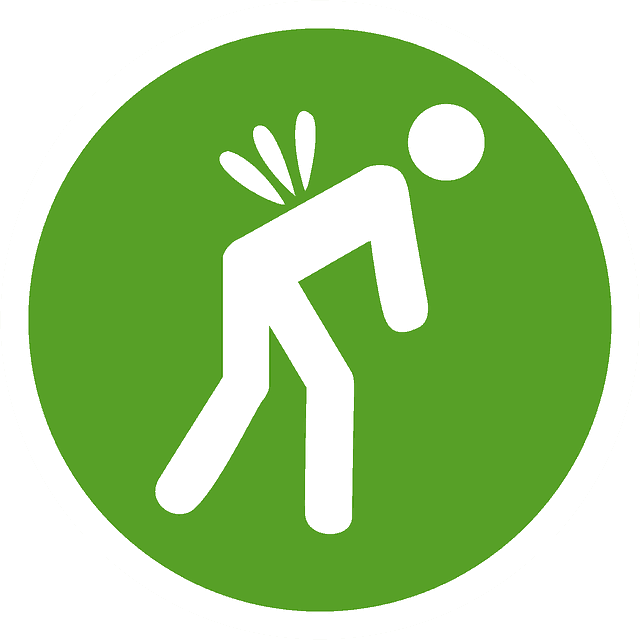Golf Swing Follow Through Technique
by Bill Winters
After decades of playing golf, I've grown to appreciate the sport as an art. And just like with any art, mastering technique is key to success.
One of the biggest rookie mistakes new golfers make is focusing just on the backswing, and ignoring what happens in their follow through. This is quite a shame because analyzing your follow through can tell you a lot about your technique, and why you may or may not be achieving the hits you're going for.
In essence, the follow through is one of your most powerful diagnostic tools for identifying where you may be going wrong in other parts of your swing.
The follow through should mirror your backswing and finish with your weight properly shifted and distributed on your leading side. Nothing is worse than finishing a great swing by stumbling-or worse, losing control of your club altogether. The correct swing posture is crucial.
Contents

The right follow through and finish should leave you feeling confident in your hit. Whether you're hitting a hybrid, wedge, or a driver. You want to look and feel like a pro.
If this is something you've been struggling with, I've outlined the key features to correct golf swing follow through below.

What is the Swing Follow Through?
In case you're completely new to golf, I want to start off with the basics. And specifically, I want to break down what I mean when I say follow through.
In golf there are different parts to a swing, there's the backswing, the impact, and the follow through.
- Backswing: The backswing is the part of the swing where you move your club away from the ball to about waist height.
- Impact : Next, we have the impact, which is the part of the swing where you build momentum and centripetal force. This starts from the top of your backswing all the way until your club makes contact with the ball.
- Follow Through : And last, but certainly not least, we have the follow through. The follow-through is essentially the grand finale of your swing. This is the point after you've already hit the ball. Maintaining proper posture and spine/joint alignment is critical during this stage of the swing to avoid injury.
If you want to get even more specific, the end of your follow-through is also referred to as the "finish". This is when your body comes to a halt after the swing.
If you've ever seen someone send their club flying or lose balance after a swing, they aren't paying enough attention to their follow thru technique. The right follow through is not only a testament to a great swing overall, but it can keep you in great shape for many years of golfing to come.
Why Proper Follow Through Is Important
So the follow through is a part of your swing that occurs after the ball has left the green. Which means it doesn't really matter-right?
WRONG.
Proper follow through is critical for avoiding injury and feeling confident in your swing.

Golf is not a contact sport, but nevertheless, countless golfers-including professionals-end up sustaining injuries while playing. This is largely due to improper swing technique which places an unnatural strain on the body.
Understanding the basic mechanics of a good swing can help you pick up momentum and ensure the ball is sent flying at your desired angle. Analyzing your follow through can help you see where you may be going wrong to avoid mistakes and injury.
While your follow through won't exactly affect your hit-after all, by the time you reach the follow through the ball is long gone-it's still the by-product of your technique. This is why it's essential that we pay attention to the follow through if we want to improve our skills.
What Does the Perfect Golf Swing Follow Through Look Like?
The perfect follow through is the result of a great swing. It's a nice little confidence boost that you implemented great technique-and you looked good doing it too.
The right posture and technique can not only help you avoid injury, but it can also give you a much more powerful swing. And the follow through is the true teller of whether or not you used the best method.
To help you better analyze your follow through, I've broken down the key features below.
The Pivot
If you want to enjoy golf for years to come, it's critical that you move your body in a healthy and natural way. The pivot is an important movement in your swing that can either ensure a healthy and natural posture or put an unnecessary strain on your joints.
The perfect golf swing requires you to rotate, or pivot, your hips around your left hip joint. This will allow you to shift your weight through to a balanced finish.
As you rotate, you will want to keep your upper body fairly tight and let the legs do all the work. This is where the power behind your swing will come from, and it will ensure that you don't accidentally lose grip of the club in your follow through.
If you often struggle with losing your club in the follow through, chances are you're moving your upper body too much. In the finish, your upper body should remain stacked against your hips. If your upper body is twisted, this means you put too much focus on your arms and chest, which will create a lot of centripetal force that makes it easy to lose your club.
If you focus the pivot in your hips and legs, you will find that it is much easier to get a powerful swing and maintain control of your club.
The Position of Your Leading Leg
Most of the power in your swing will come from your legs, which is why the position of your legs in the pivot is so important.
For most golfers, your left leg will be your leading leg.
Throughout your entire swing, your left leg should be aligned, or stacked, with your left hip joint. This means your ankle and your knee should be in a straight vertical line, also known as neutral alignment. Not only is this the safest alignment for your body to avoid injury, but it is also the most powerful position.
As you rotate, you will be able to post up against your leading leg, creating a lot of force.
Right Foot Position
Now that I've covered the position of the leading leg, it's time to look at the back leg. For most golfers, your back leg will be your right foot. The right foot should be facing straight towards the target, with 90% of your body weight resting on your leading foot instead of your right foot in the finish.
The best way to tell you've successfully shifted your weight is if your right foot ends up on your tiptoes. If you have a crease in the toe-box of your right shoe, you are probably keeping too much weight on that foot. It should feel light against the ground with most of your weight in your left leg.
Weight Shift is Key
The most important thing for proper follow through is weight shift.
From the backswing, all the way through to the finish, the majority of your weight should be on your leading leg-the left leg in most cases.
As your hips rotate and post up against your leading leg, you will create a lot of leverage from the ground. As a result, your right leg should almost come off of the green in your follow thru. In fact, the only reason it is still touching the ground is to help you keep your balance.
Once you understand how to properly shift your weight you won't even have to think about the position of your feet, because the proper posture will just happen naturally.
If you're struggling with weight shift, Rotary Swing has some great articles and videos that may be able to help.Don't Get It Twisted-Keep Your Shoulder at the Target
Another sign of a sloppy swing and improper follow through, is a twisted upper body. With the perfect swing, your shoulders should end up facing straight forward towards the target.
If your body is twisted unnaturally, you're likely drawing power from your upper body instead of your legs-a big no-no since your upper body is much less powerful. This can cause serious injuries down the line.
With the perfect swing, your chest and your belt buckle should be aligned facing straight at the target.
Arm Position in the Finish
One thing that is often overlooked in the follow through is the position of your arms and wrists. It may come as a surprise to new golfers, but your arms shouldn't be burdening much of the work. In fact, they're mostly passengers in your swing.
Sure, you're holding the club in your hands, but, in reality, your arms should mostly be passive throughout your swing, with most of your force coming from your legs.
You will want to keep your arms extended through most of your follow through, with your elbows bending inwards only at the end of your finish. This will allow you to pick up the most momentum even with minimal movement in your upper body.
Rookie golfers often overexert their right sides, putting unnecessary tension on their arms and shoulders. This can cause you to strain your muscles and injury yourself-not to mention, your upper body is much weaker than your lower body so you won't be able to achieve as powerful of a hit with this method.
Instead, your arms should and wrists should be loose and relaxed in the finish of your golf swing.
Mirror the Backswing
In many ways, your follow through should mirror your backswing. For both the backswing and the follow through your arms will be extended directly out in front of your sternum (or chest) at some point.
The best swing will deliver seamless and consistent motion in order to pick up the most power. It is not until the finish of your swing that your arms will begin to fold at the elbows. Keeping a relaxed but locked posture in your arms during the swing will deliver a lot more power.
A Balanced Finish
At the very end of your follow through your body should come to a balanced finish. Most of your weight should be on your left leg, with hips in natural alignment, and your chest and belt buckle stacked facing forward.
Your arms will naturally finish on the left side of your body, with the elbows folded in at about chest-height.
Maintaining a steady posture until your ball lands will make it easier to see how you did while putting minimal strain on your body.
A balanced finish looks great, feels great, and is the sign of a great swing.
How to Improve Your Follow Through
If you're struggling with your follow through, I highly recommend recording yourself next time you go golfing. This can help you examine your movements and identify points of improvement throughout the entirety of your swing. The truth is, we have a funny way to trick our minds into thinking we're using proper technique when in reality we could be way off.
If you've been struggling with your follow through, there are a few golf swing follow thru drills you can try to improve your skill.
Drills to Improve Follow Through:
- Practice Throwing: On a basic level, practicing tossing a ball can help you understand the natural weight shift that occurs in the body after delivering force. You'll notice the weight naturally shifts onto your leading leg and your other foot will come gently off of the ground as you finish the swing. This type of drill is especially useful if you find that weight shift is one of your key issues.
- Practice Half Swings: Place a second ball about 2" from your peg and practice small half-swings. These swings will allow you to focus on your posture, posting up on your leading leg, and practicing weight shift.
- One Legged Swings: This drill involves you using only your leading leg during swings. Completely shift the weight off of your right foot and drill half-swings until you get in the habit of keeping your weight on your left side. These swings will have minimal force but they are still a great way to practice.
Once again, if you're struggling with your follow through, make sure you're taking a look at the other parts of your swing as well to see if the issue may lie in your backswing or impact techniques.
Sometimes as golfers we get too much in our heads, when in reality your follow through should feel natural and easy.
How Professional Golfers Execute Follow Through
One of the most common conversations I hear out on the course has to do with the pros. How Tiger Woods delivers his downswing, or how Rory McIlroy executes his golf swing finish.
But the truth is-pro golfers don't always have the best follow through. Sure, they've got tremendous power, but even professional golfers lose countless days of practice due to injury-mostly from improper swinging technique.
This is why what you see on TV may not actually be the best technique for your body.
For the most part, pro golfers do follow the techniques I mentioned above. However, you may see some deviations-especially when they are going for really long distances. This is why you will sometimes see Tiger Woods's leg a little bent in his finish, or you may see his upper body twisted a bit further out of neutral alignment.
For the pros who have trained for these body movements, they may be ok on occasion. However, for the average golfer, it's critical you stick to proper technique in order to avoid injury.
The techniques I've mentioned above, including the rotary swing, shifting your weight, and keeping your joints in a neutral alignment, are what most physicians recommend if you want to enjoy golf for years to come. Not to mention, mastering these techniques can give you an incredibly powerful swing, that can keep you golfing (and looking) like a pro.
Final Thoughts
A neat follow through is a sign of a great golfer.
Many rookie golfers ignore follow through, viewing it as unimportant since the ball is already long gone. However, paying attention to the natural movement of your body post-hit can actually tell you a lot about your technique and where you may be able to improve.
In my years of golfing I've had too many friends injure themselves due to bad swinging technique. Like I said earlier, golf is not a contact sport, so there's no reason why we should be getting hurt out on the green.
Analyzing your follow through, and especially your finish can tell you whether or not you're properly drawing strength from your legs and shifting your weight. This can help you improve your momentum and avoid needless injury.
Now it's your turn to follow through! I hope my tips can help you achieve an even more seamless follow through that acts as the cherry on top of a great swing.
If you're looking for a new set of clubs, I've got you covered!
Related Posts
 |
 |
 |
 |

About Bill Winters
Those who have not yet tried the sport just can’t imagine what is driving these golfers to brave the sun’s heat and go around a course bigger than several football fields combined. It seems like an awful lot of work considering that the ball is quite small that is must be hard to hit, the ground of the course is not flat and, most annoying of all, there are sand traps lying around seemingly bent on preventing a player from finishing the course.
Thoughts on "Golf Swing Follow Through Technique"
 |
 |
 |
 |
About the Author

The game of golf may seem like an awful lot to take on when one considers that the ball is quite small, must be hard to hit and carry through windy conditions with little chance for error. The ground course has hillsides which make it challenging enough without adding sand traps who seem bent on preventing players from completing their round!
Get the FREE Gifts now. Or receive the latest golf eBooks for free from our bestselling.
Disable Ad Block to reveal all the secrets. Once done, hit a below button:
 |
 |
 |
 |


